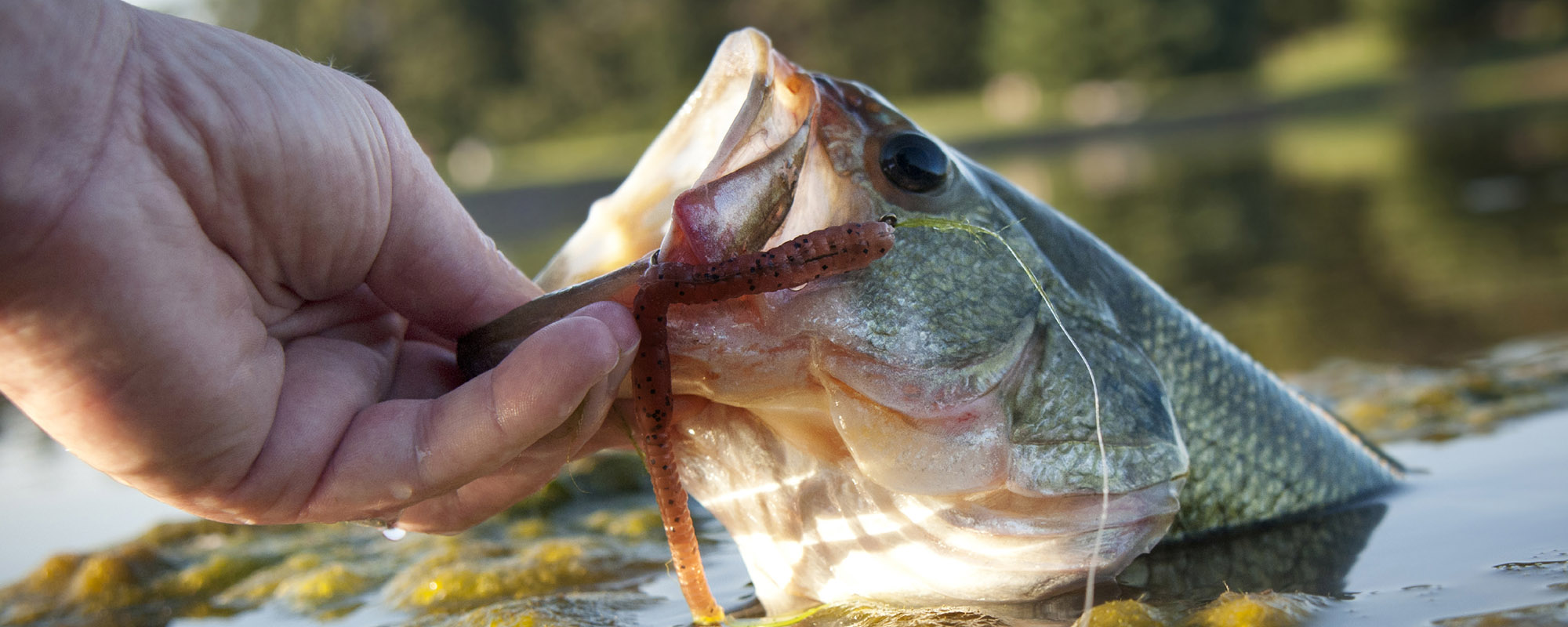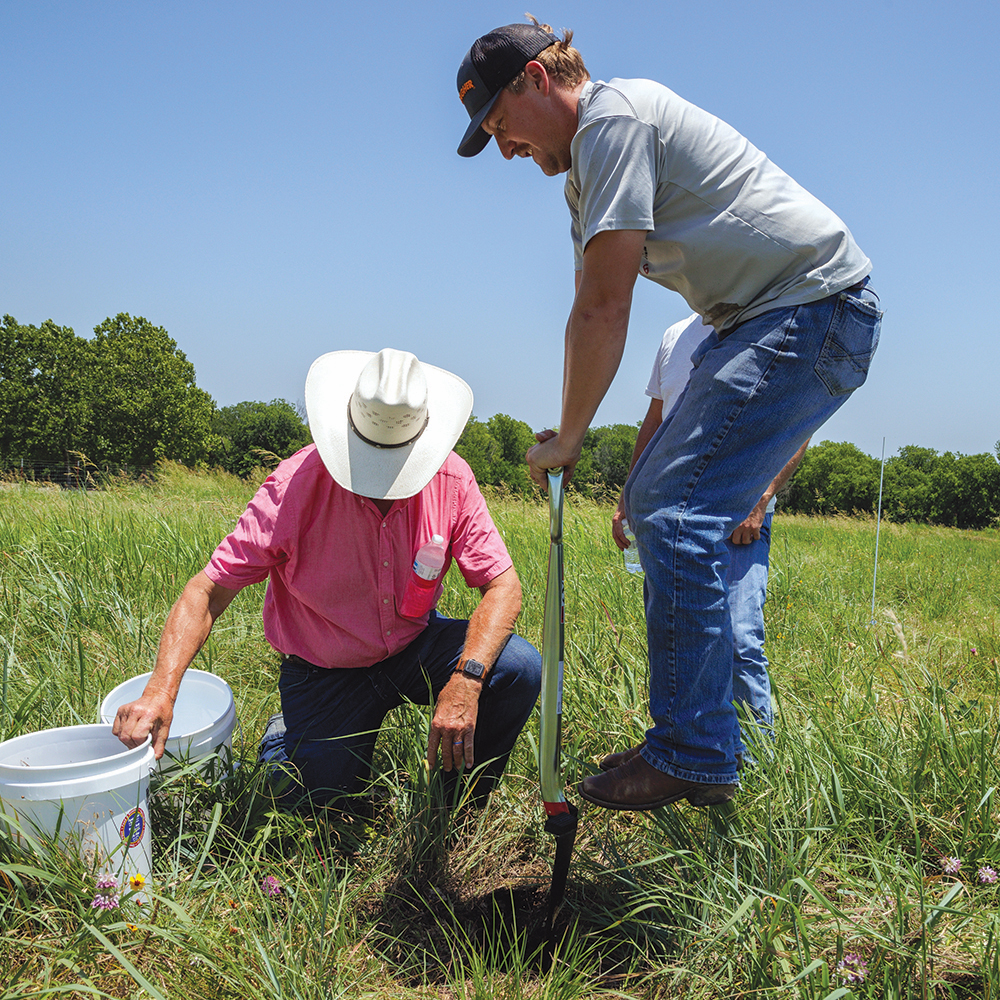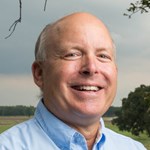Many pond owners in Oklahoma are interested in Florida largemouth bass because they tend to grow larger than northern largemouth bass (Figure 1). During the 1970s and early 1980s, fisheries biologists were unsure about Florida bass adaptability to small impoundments in Oklahoma. Some theorized Florida bass would not perform well this far north because research had shown they were less tolerant to cold stress than northern bass.
In 1982, we initiated a project at the Pasture Demonstration Farm to gain experience with Florida bass and better understand its management and suitability for small impoundments. I chose a watershed with only two ponds, 3.9-acre Bass Pond and 1.2-acre 3-South Pond. Bass Pond was a newly constructed pond and 3-South was about 30 years old, allowing us to examine Florida bass performance in both fresh and relatively eutrophic environments. We applied rotenone to both ponds and the terrace puddles in the watershed to remove all existing fish.
We stocked Florida bass 4.5 to 5 inches long in December at rates of 95 and 108 bass per acre in the Bass and 3-South ponds, respectively. We sent a sample of four bass to a fish genetics laboratory in San Marcus, Texas, to confirm their genetic purity. We stocked the ponds with bluegill, channel catfish, and fathead minnow in 1982. We also added grass carp in 1983.


Beginning in 1985, we seine sampled Bass Pond (Figure 2) between June 7 and October 3 of each year except 1995. We collected small bass fingerlings every year it was seined, indicating Florida bass spawned successfully in each of those years. 3-South Pond was sampled in the same manner most years, missing 1990, 1991, 1993, 1995, and 1996. We collected small bass fingerlings each year except after 1994.
Beginning in 1986, Noble Research Institute employees and their guests were allowed to harvest bass from these ponds. The bass harvest was regulated through length and creel limits. Since the late 1980s, bass up to nine pounds have been caught in Bass Pond. Legal fishermen have caught no bass over 10 pounds from either pond. Northern largemouth bass have been stocked in 19 other ponds on the same farm. One of these 19 ponds also produced northern bass up to nine pounds, but none exceeding 10 pounds.

Gene Gilliland and Rick Horton of the Oklahoma Department of Wildlife Conservation (ODWC) collected 20 bass from each pond with electrofishing equipment (Figure 3) in March, 1991. Electrophoretic analyses of liver samples from these fish were performed the same year at the ODWC Fisheries Research Laboratory in Norman. These samples indicated the majority of bass in both ponds were pure strain Florida bass (Figure 4).

No pure strain northern bass were present in the sample of 40 bass. However, some intergrade or hybrid bass were present, indicating the presence of some northern bass genes. The northern bass genes might have entered the ponds from three potential sources:
- Some fish stocked in 1982 may not have been pure strain Florida bass.
- Some northern bass might have immigrated from a small pond built in the watershed above 3-South Pond in 1984 and stocked with northern bass in 1985. However, this seems unlikely since 3-South Pond has a higher percentage (85%) of pure strain Florida bass than Bass Pond (75%).
- Fishermen might have released some northern bass caught at other ponds. This is likely since we have documented incidences of fishermen stocking unwanted fish in other ponds on the farm.
This project demonstrates that Florida largemouth bass can survive in small impoundments at least as far north as Ardmore, Oklahoma. Bass Pond’s fishery has persisted for more than 14 years thus far. The Florida bass fishery in 3-South Pond persisted for 11.7 years until a die-off apparently caused by low dissolved oxygen in September 1994.
The ponds were continuously covered with ice more than 6 inches thick for several weeks during December 1983 through January 1984. We saw two dead bass under the ice in Bass Pond during this period. Approximately four 1- to 2-pound bass were found dead in Bass Pond during March 1989, presumably due to cold stress. Until 1994, no other bass die-offs were documented in either pond. These ponds were not monitored daily, so it is possible that a partial bass die-off, such as the one seen in March 1989, could have occurred without being noticed.
Maximum size of Florida bass in the two ponds was good, but not necessarily better than northern bass on the same farm. The project was not designed to test growth potential of Florida bass, because I did not manage the fisheries in a manner to encourage large bass.
According to Gene Gilliland, who has probably researched Florida bass adaptability in Oklahoma more than any other individual, these two ponds are probably the longest-lived, relatively pure strain Florida bass fisheries in Oklahoma.

![2023-11-07_14-53-54[1]](https://www.noble.org/wp-content/uploads/2023/11/2023-11-07_14-53-541.png)


Comments